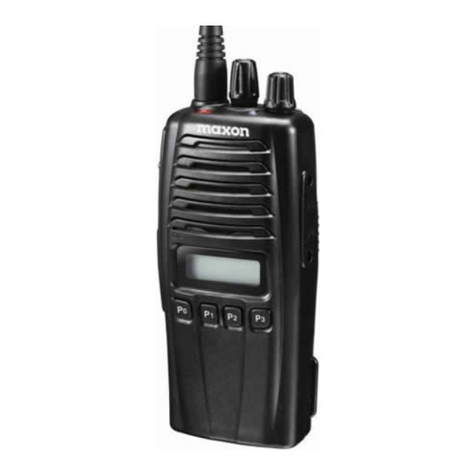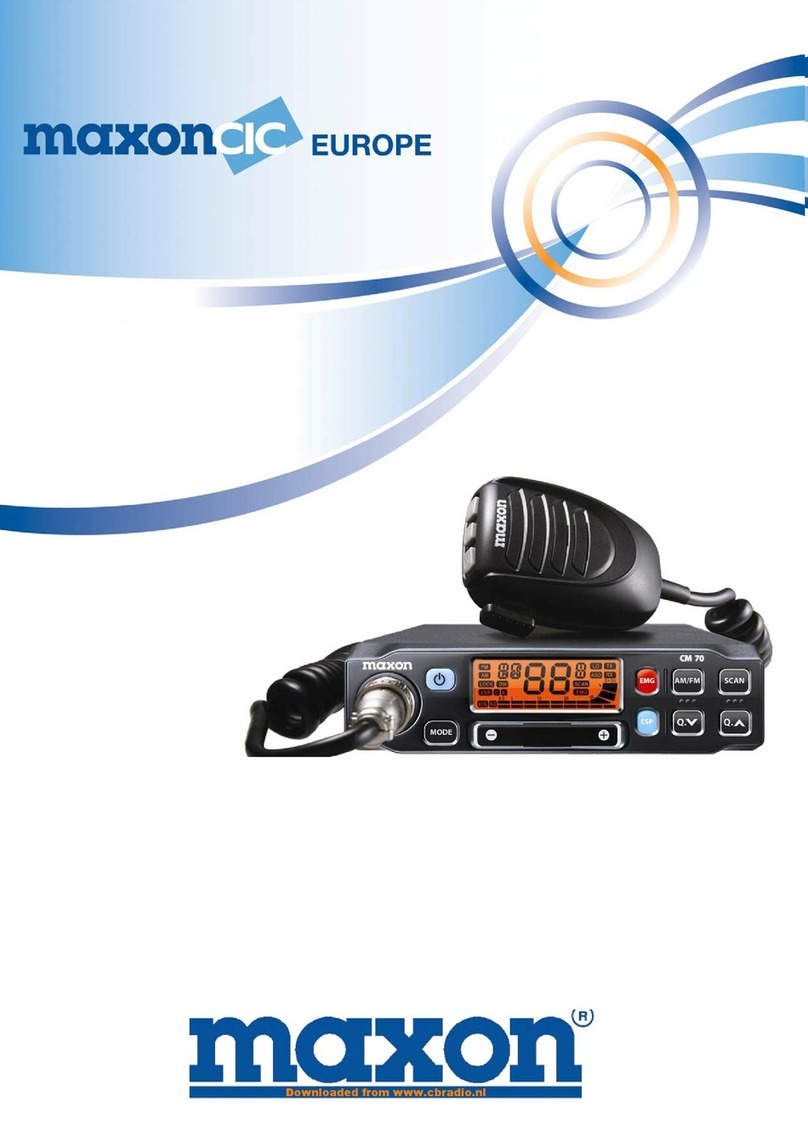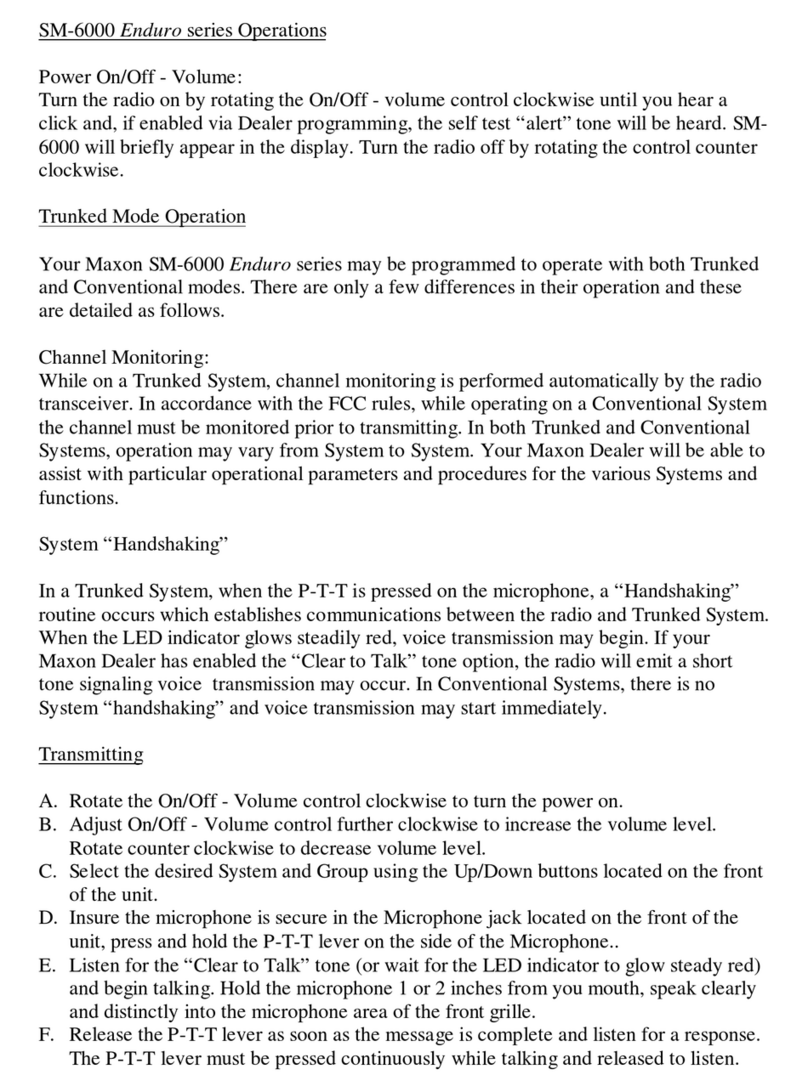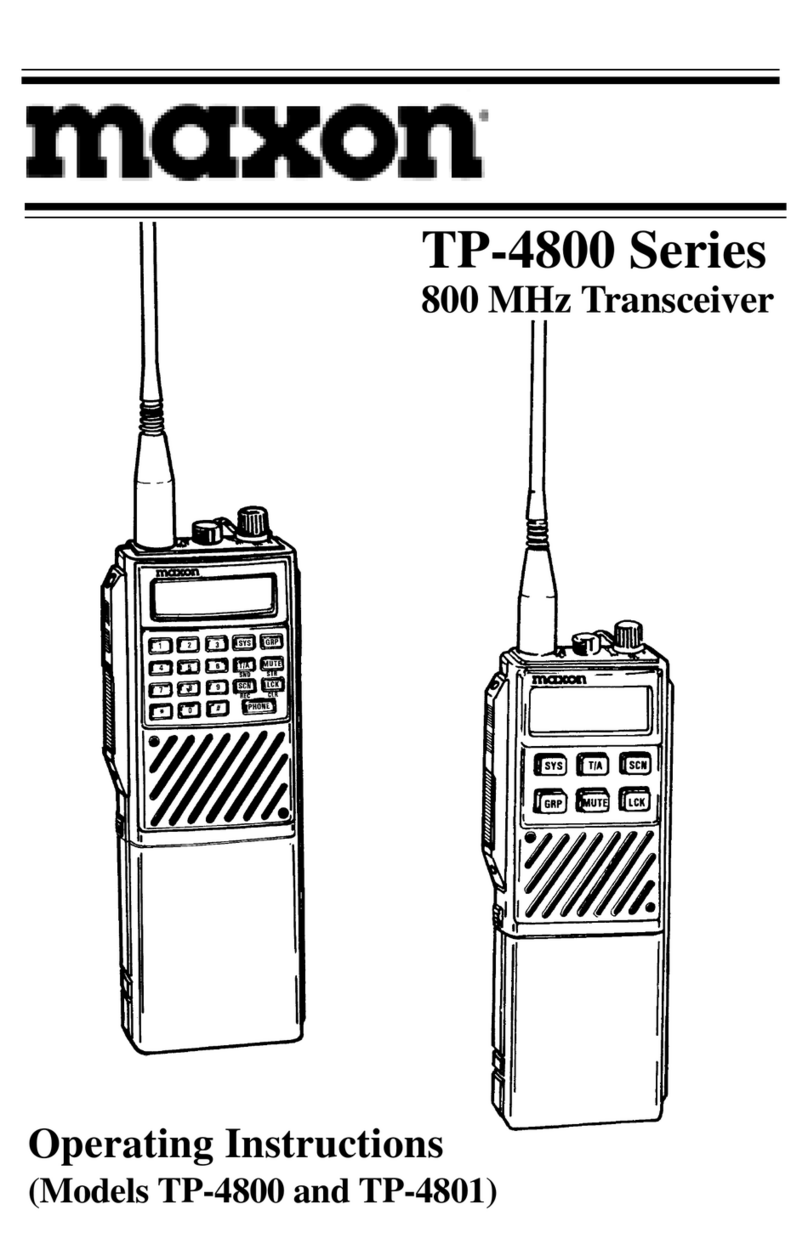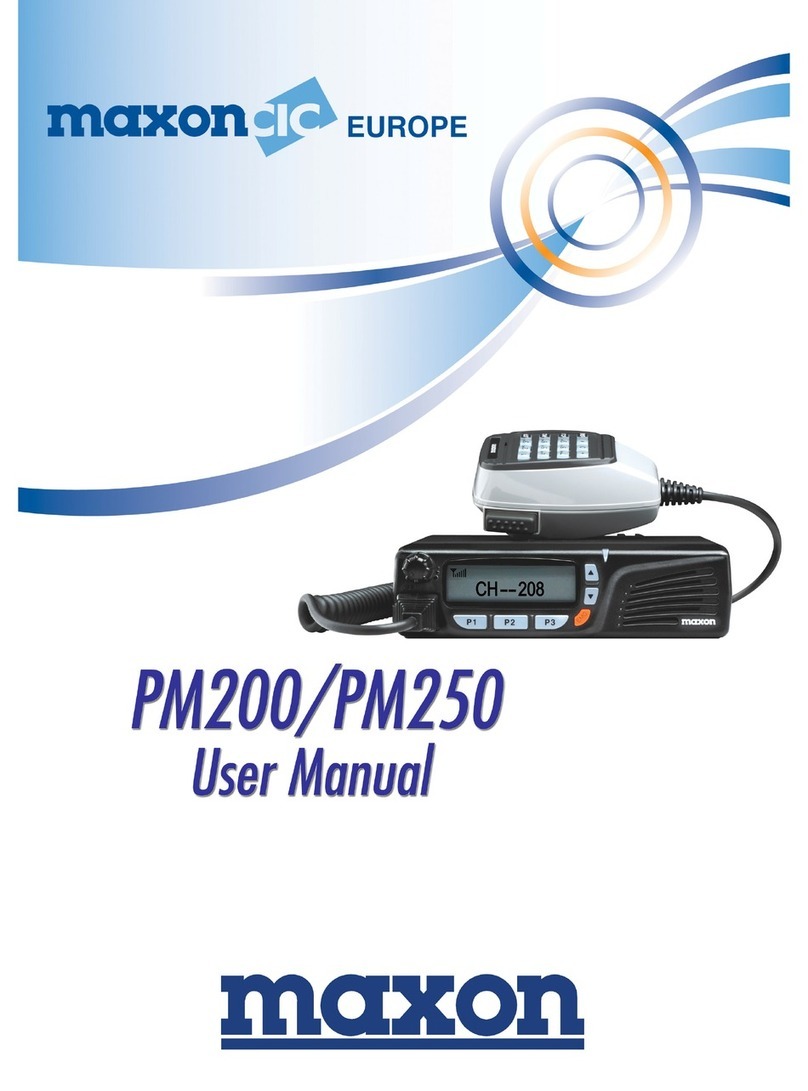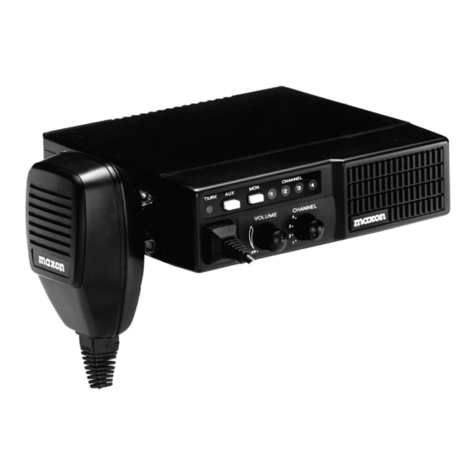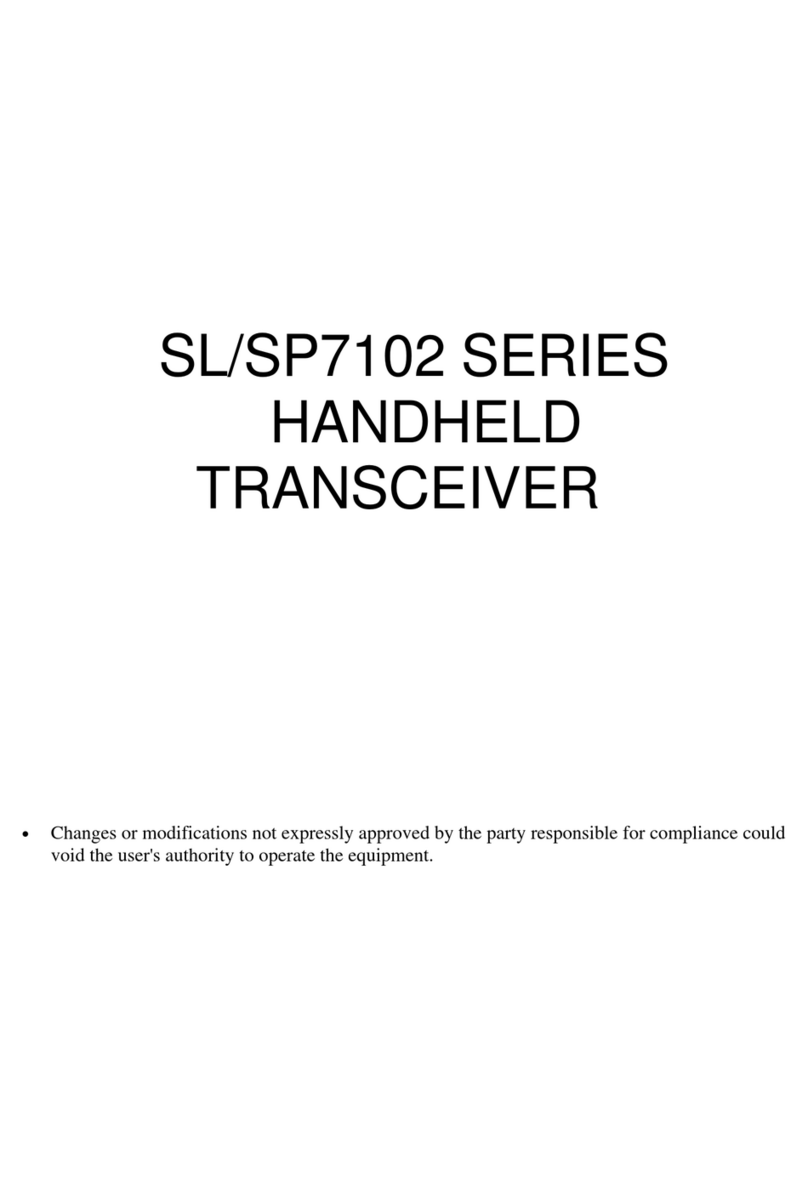User Manual SD170E Series
Page 4
About your SD170E Series data radio
About Your SD170 Radio
The SD-170E Series of RF Link Modules utilize the latest technology in their designs and
manufacturing. SD-170E models are Phase Lock Loop Synthesizer (PLL)/microprocessor
controlled, and offers 1/ 5 watt (Low/High) programmable output power with 16-channel
capability. Multiple functions including 1200 to 9600 baud rates, AC and/or DC audio coupling, in
these fully programmable RF Link Module units, to use FSK GMSK and FFSK modulation optional
boards are provided. Programmable sub-audio squelch system (CTCSS & DCS) and two-tone
squelch system are added to the signal level detect squelch system (RSSI). GPS Data handling is
provided to interface and control an internal GPS receiver (optional board).
To assure satisfaction from the radio, we urge you to thoroughly read the operation and function
information in this manual before operating your SD-171E/SD-174E.
Applications of some of the functions described in this manual are determined by the system you
use. Your dealer will program your radio so that you have the greatest number of functions
possible relative to your needs.
Should you have questions regarding the operation of the radio, please consult your Dealer.
General SD170E Specification
General specification VHF UHF
Equipment Type Data radio (Wireless
Modem) Data radio (Wireless Modem)
Model Series SD-171E SD-174E
Performance Specifications TIA/EIA-603 /ETS 300-
113 TIA/EIA-603 /ETS 300-113
Frequency Range 146-174MHz 450-490MHz
RF Output 1-5W 1-5W
Channel Spacing 12.5KHz, 25KHz Programmable
Modulation Type F3D, F3E
Intermediate Frequency 45.1MHz & 455KHz
Number of Channels 16
Frequency Source Synthesizer
Operation Rating Intermittent 90 : 5 : 5 (Standby : RX : TX)
Power Supply Ext. Power Supply (12 VDC Nominal)
Temperature Range
Storage
Operating
From -40°C to +80°C
From -30°C to +60°C
Current Consumption
Standby(Muted)
Transmit 5Watts RF Power
Transmit 2Watts RF Power
< 65mA
< 2.0 A
< 1.0 A
Lock Time : < 10ms
TX to RX attack time < 20ms (No Power Saving)
RX to TX attack time < 20ms
Dimensions (118mm)W X (63mm)H X (35mm)D
Weight 266.5grams
English



